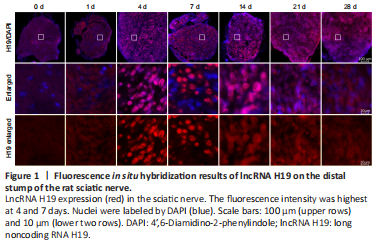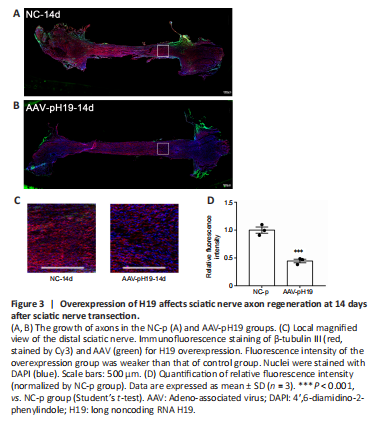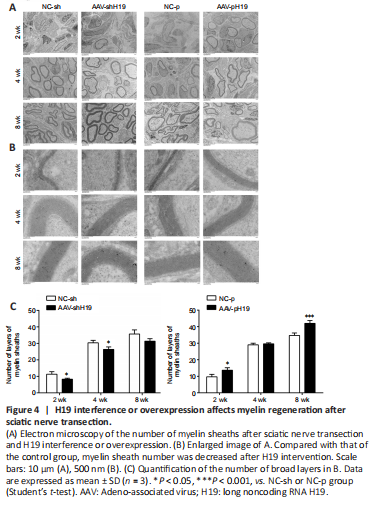周围神经损伤
-
Figure 1|Fluorescence in situ hybridization results of lncRNA H19 on the distal stump of the rat sciatic nerve.

H19 expression during the WD process after SNI was detected at seven time points by fluorescence in situ hybridization. H19 expression level was higher at 4–7 days than that at 0 days after SNI and decreased gradually after 14 days (Figure 1).
Figure 3|Overexpression of H19 affects sciatic nerve axon regeneration at 14 days after sciatic nerve transection.

On the 14th day after injury, axon growth of the distal sciatic nerve stump was detected using immunohistochemistry (Figure 3). When H19 was overexpressed, axon growth was worse and the fluorescence intensity of SCG10 labeled new axons was weaker than that in the control group (P < 0.05). The results suggested that H19 overexpression inhibited axon regeneration.
Figure 4|H19 interference or overexpression affects myelin regeneration after sciatic nerve transection.

The newborn sciatic nerve tissue in the distal sciatic nerve myelin was observed by transmission electron microscopy at 2, 4, and 8 weeks after SNI. The peripheral nerve myelin sheath showed a light and dark concentric circular plate-like structure. At 2, 4, and 8 weeks, after interference with H19, the number of myelin sheaths was lower, the myelin sheath was thinner, and the number of myelin layers was reduced compared with those in the control group. Overexpression of H19 had the opposite effects (Figure 4).